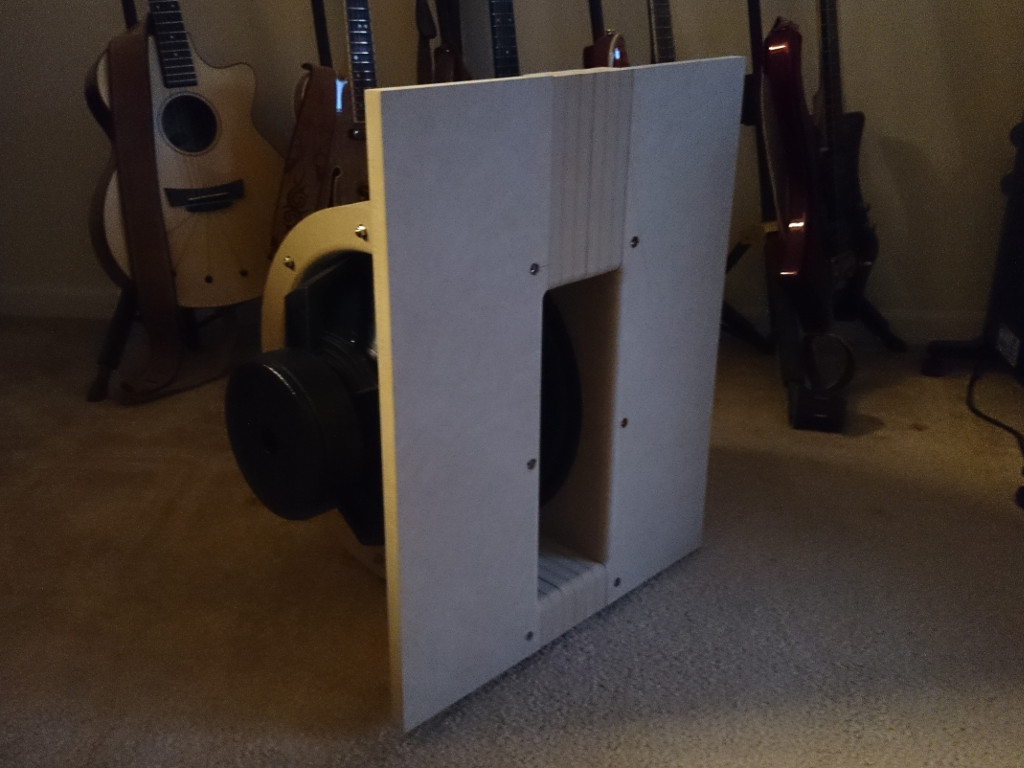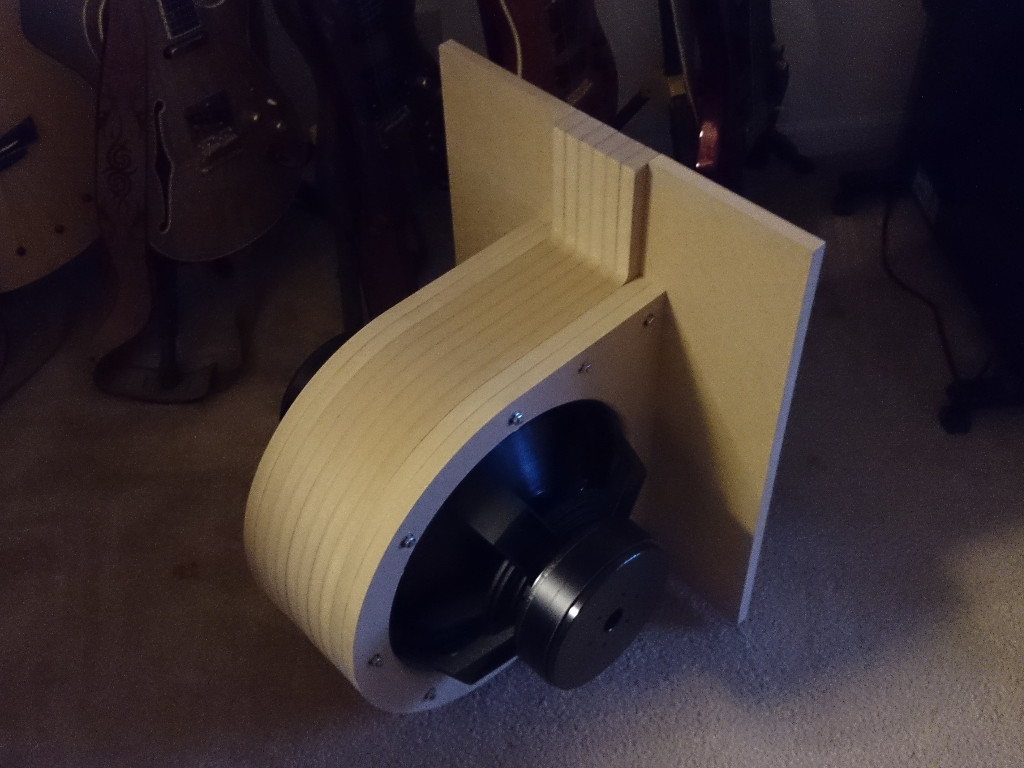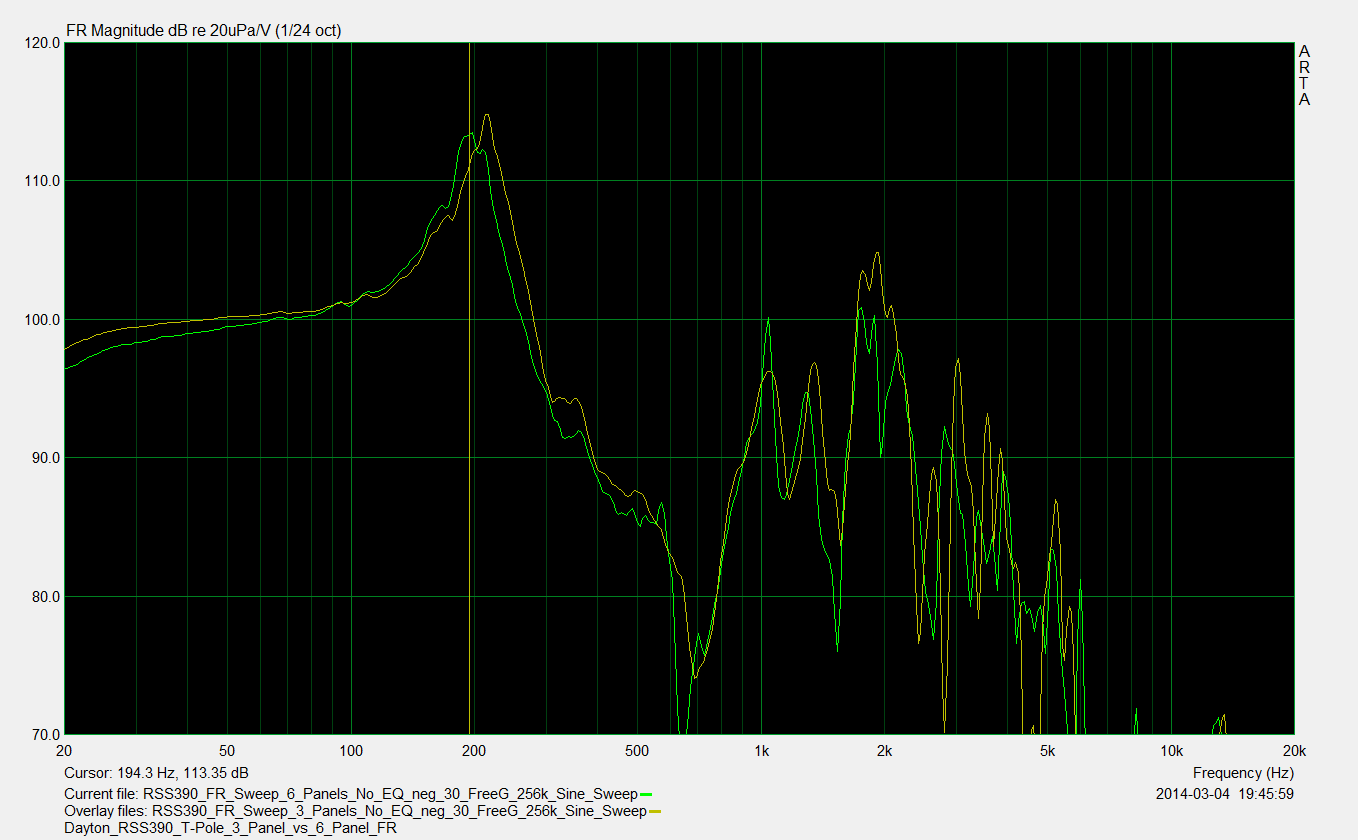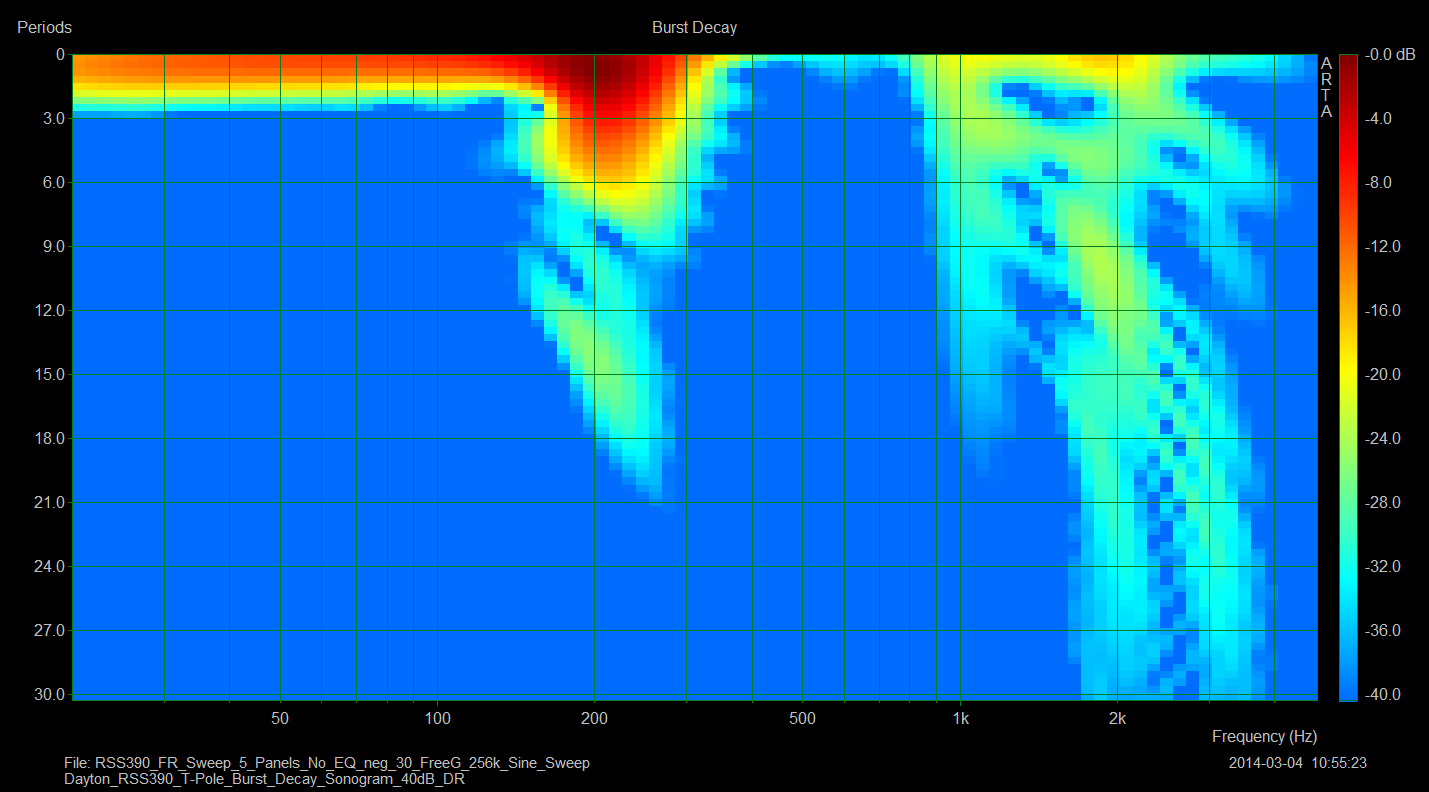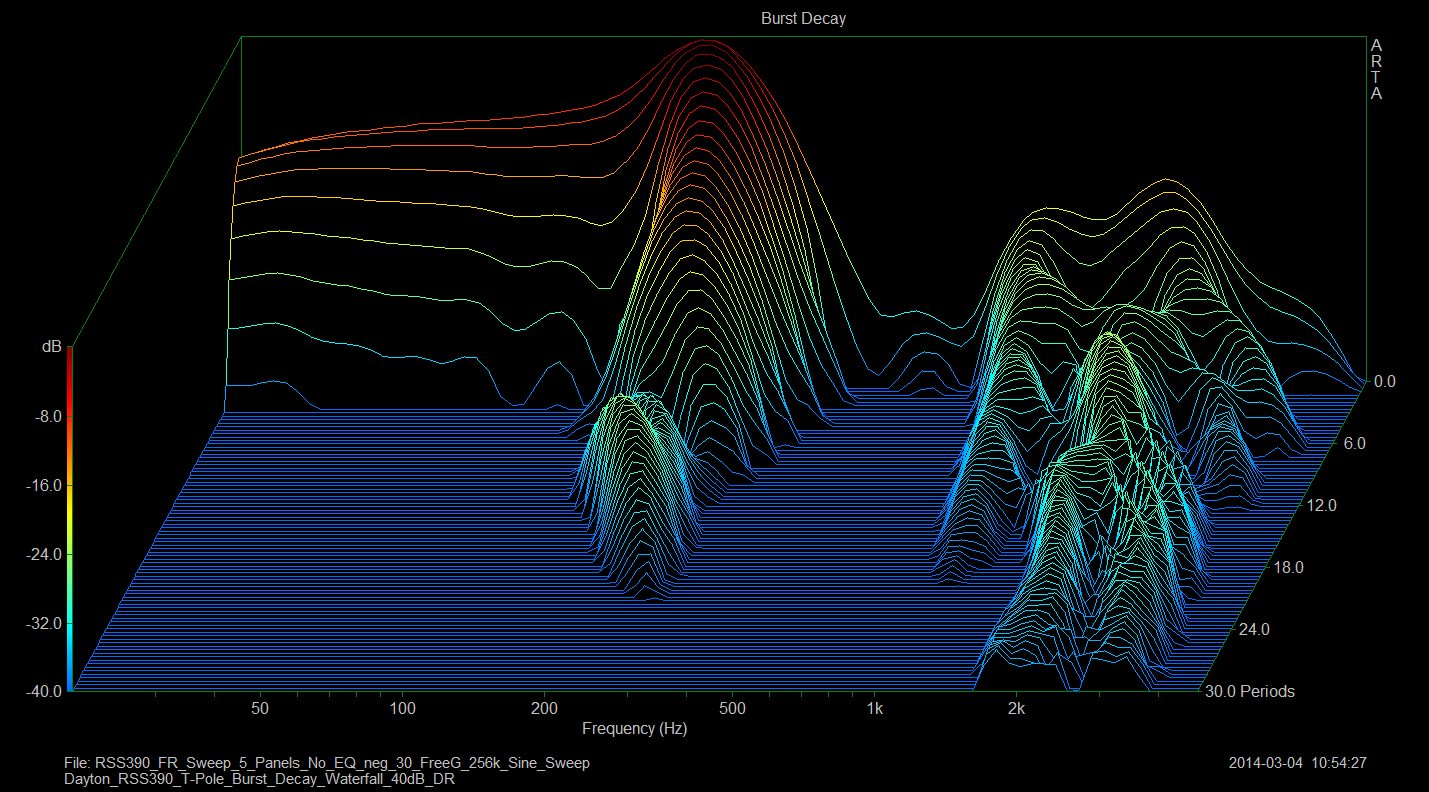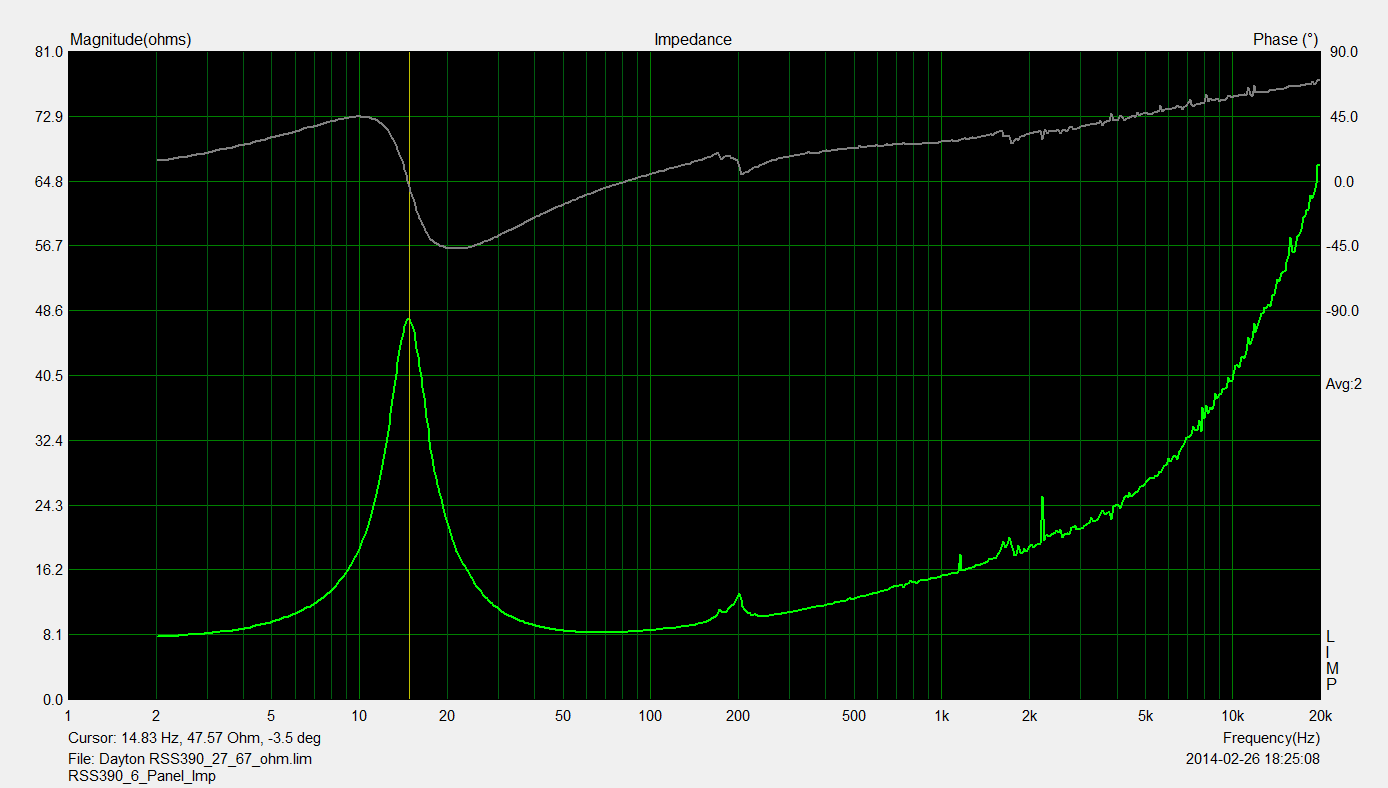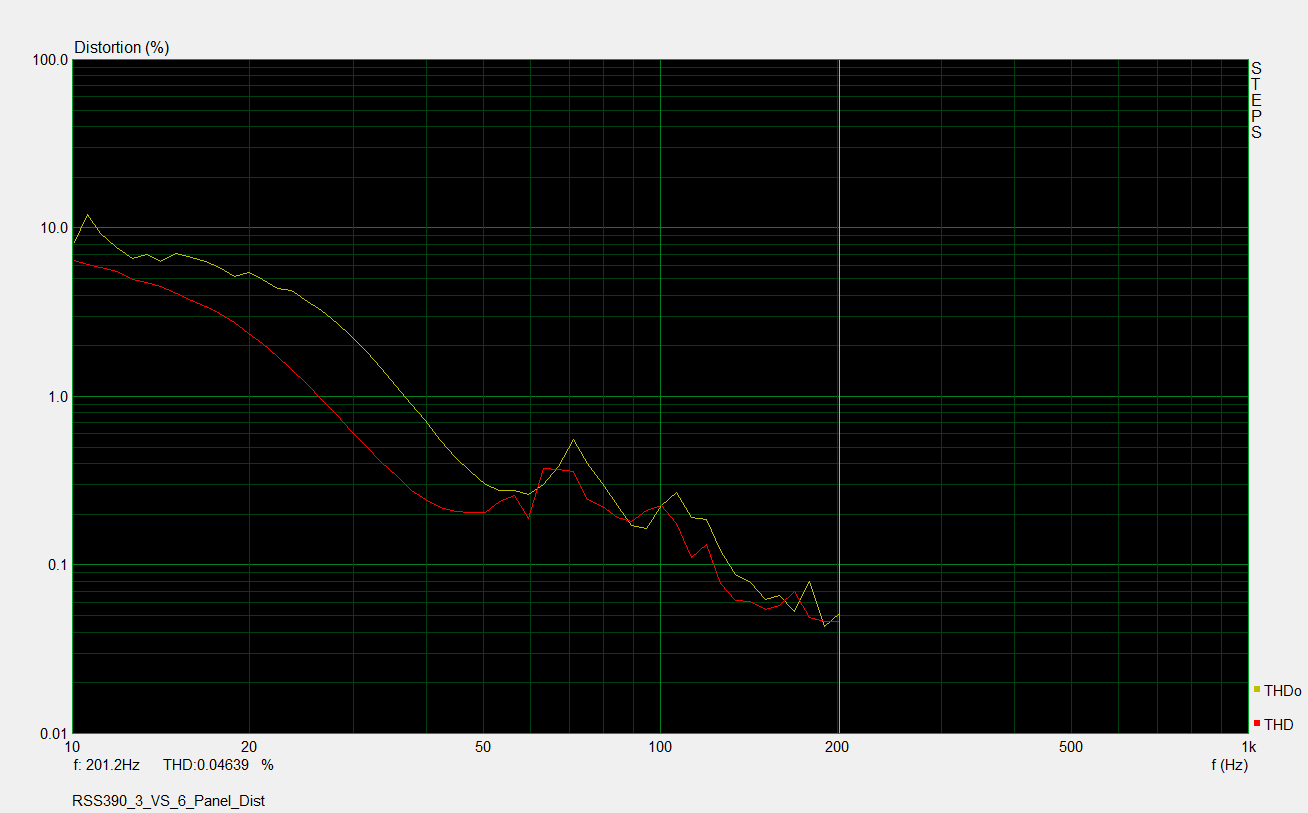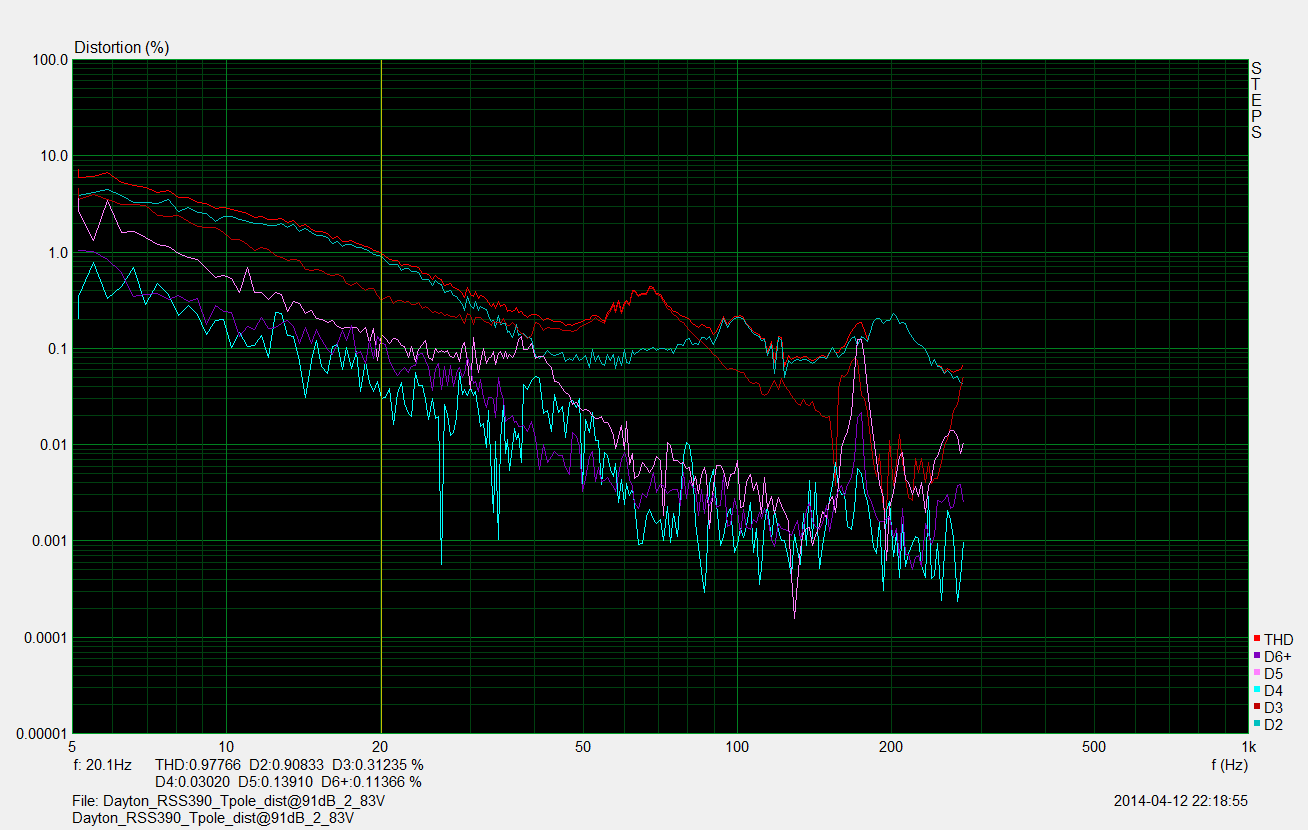This design is based on a article Nelson Pass wrote about a slot loaded open baffle speaker. Mr. Pass states that the genesis of his slot loaded open baffle woofer cabinet came from his time at ESS in 1972.
Nelson Pass Slot Loaded Open Baffle
After some calculations I came up with the test design you see below. The guys at Meniscus put me in contact with Seth Horton, and for a reasonable fee he constructed the cabinet for me (Thanks Seth!). The 20”X20” slot loaded open baffle enclosure houses two 15” Dayton RSS390HF subwoofers. When I was modeling this enclosure I noticed it was T-shaped, so when I saved the 3D model I called the filename “T-pole.” It’s not a snazzy name but it’ll have to do for now.
I wanted to test how the slot width effected the dipole peak and distortion. Naturally, a smaller chamber will have a higher resonance but I wasn’t quite sure how much it would effect the resonance peak or distortion. I tried to make the slot height as small as possible, and if you look at the pictures you can see the slot manifold covers the frame of the driver. The dipole peak of the 2.25” slot port is 215Hz and the dipole peak of the 4.5” slot port is 194Hz, a 10% change. That’s not much of a difference, but the change in distortion is significant.
Front View, 4.5” Slot Port Width
Rear View, 4.5” Slot Port Width
Dipole peak comparison, 2.25” vs 4.5” slot port width, 215Hz and 194Hz
4.5” Burst Decay Sonogram, 40dB Dynamic Range
4.5” Burst Decay Waterfall, 40dB Dynamic Range
RSS390 4.5” Slot Impedance
Nearfield Distortion, 2.25” vs 4.5” Slot Port Width, Yellow=2.25”, Red=4.5”, 5VRMS
I didn’t think the distortion delta between the 2.25" and the 4.5" slot would be a much as I measured. Aesthetically speaking the 2.25" slot would have been better but the distortion difference is significant enough to justify the larger opening.
Nearfield Distortion, level set to 91dB@1M, 2.83VRMS
